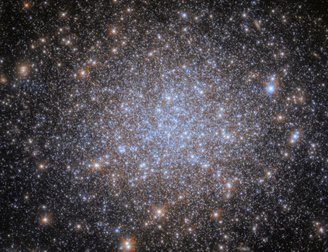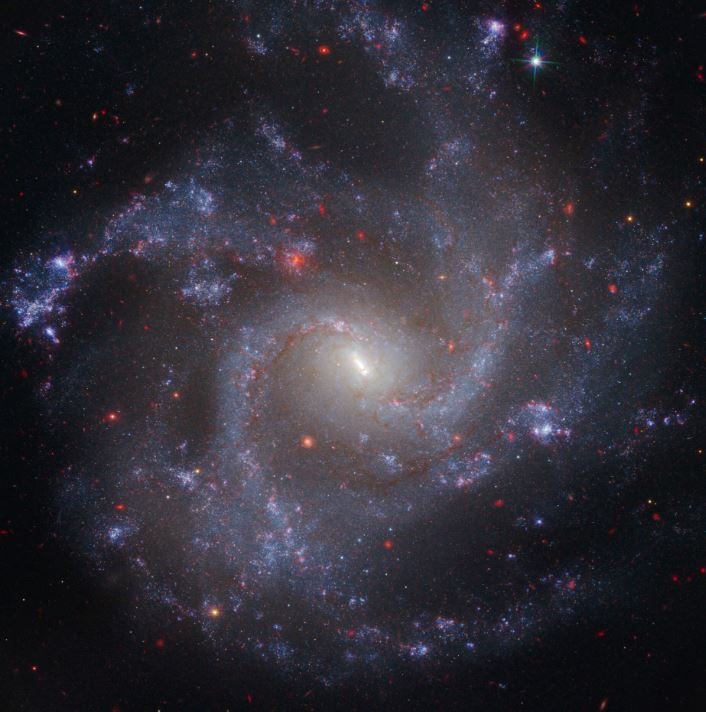The year started just a few months ago, but the United States National Aeronautics and Space Administration (NASA) has already presented some incredible images It is collected by different spacecraft. This March, new images were produced and released in partnership with the European Space Agency (ESA) and the Canadian Space Agency (CSA).
In this list, we have brought together some of the space observations that most impressed scientists and astronomy enthusiasts. For example, one of them provides data confirming the expansion rate of the Universe; another shows a massive star-forming region.
Webb and Hubble Confirm the Expansion Rate of the Universe
Although researchers agree on the calculations for the rate of expansion of the Universe, also known as the Hubble Constant, they know that the Hubble Voltage difference is a real problem. Recently used James Webb Space Telescope (JWST) to confirm the expansion rate and dispel scientists’ doubts about Hubble measurements.
Because the region photographed contains Cepheid variable stars, scientists were able to use the collected data to calculate the expansion rate of the universe.
“This is the farthest galaxy in which Hubble has detected Cepheid variable stars. These stars are important markers for measuring the rate of expansion of the Universe. The calculated distance from the Cepheids correlated with Type Ia supernovae in the galaxy. Type Ia supernovae are so bright that they are used to measure cosmic distances that Cepheids cannot reach.” and extends measurements of the expansion rate of the Universe deeper into space,” NASA explains.
NGC 604
In the new image published by James Webb, scientists focused their efforts on capturing the star-forming region NGC 604, which consists of gas bubbles and filaments with a reddish hue stretching across the image. There are more than 200 types of hot, massive, early-forming stars.; Astronomers claim that it is very rare to find these structures densely in our universe.
Because they are relatively close, the observation allows scientists to further investigate the NGC 604 region. The image captured by the mid-infrared device (MIRI) is presented on the right, while the near-infrared device (NIRCam) was used on the left. .

“There are noticeably fewer stars in the MIRI image of NGC 604 than in Webb’s NIRCam image. This is because hot stars emit much less light at these wavelengths. Some of the stars seen in this image are red supergiants; They are cold but very large stars, hundreds of times the diameter of our Sun. The blue branches of the material indicate the presence of polycyclic aromatic hydrocarbons, or PAHs,” explains the official publication. image .
NGC 1841
The NGC 1841 star region is located within the Large Magellanic Cloud (LMC). A dwarf galaxy orbiting the Milky Way, approximately 162 thousand light-years from Earth. Scientists explain that the LMC hosts many globular clusters and celestial bodies with complex formations.
NASA explains that these globular clusters have stars so old they are comparable to celestial fossils; Therefore, researchers believe that the region may provide data on early star formation.

“Increasingly sophisticated observations have revealed that stellar populations and other properties of globular clusters are diverse and complex, and how these tightly packed clusters form is not well understood. However, there are certain consistencies in all globular clusters: they are very stable and therefore can last for long periods of time and that “For this reason, they may be very old.”
Did you like the content? Stay up to date with more astronomy curiosities at TecMundo. Or take the opportunity to discover how a ‘dead’ star reveals the origins of a mysterious space phenomenon.
Source: Tec Mundo
I’m Blaine Morgan, an experienced journalist and writer with over 8 years of experience in the tech industry. My expertise lies in writing about technology news and trends, covering everything from cutting-edge gadgets to emerging software developments. I’ve written for several leading publications including Gadget Onus where I am an author.













